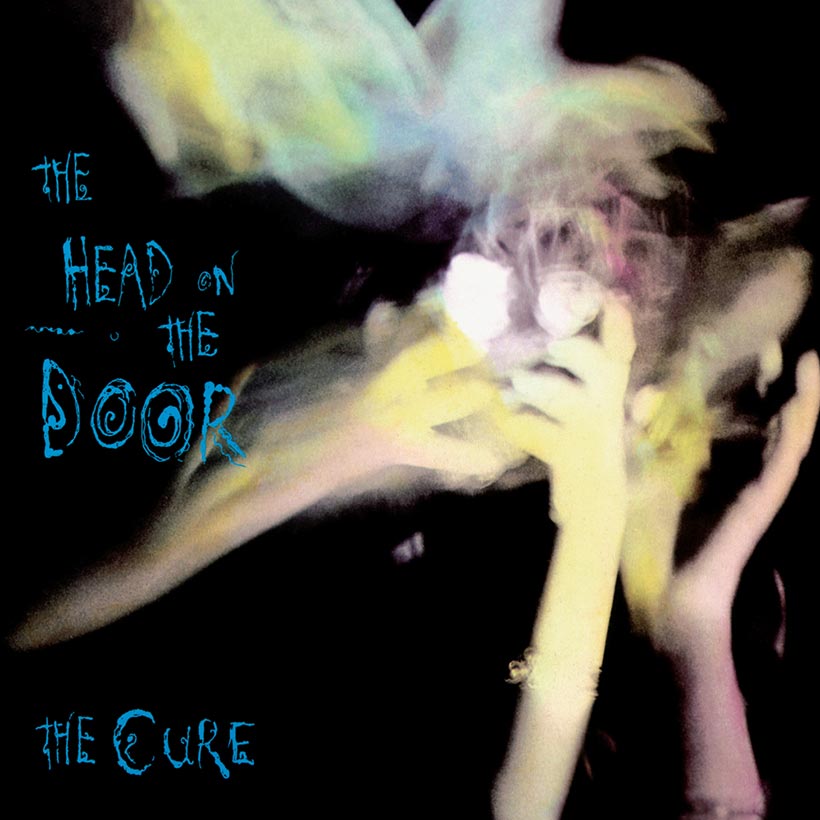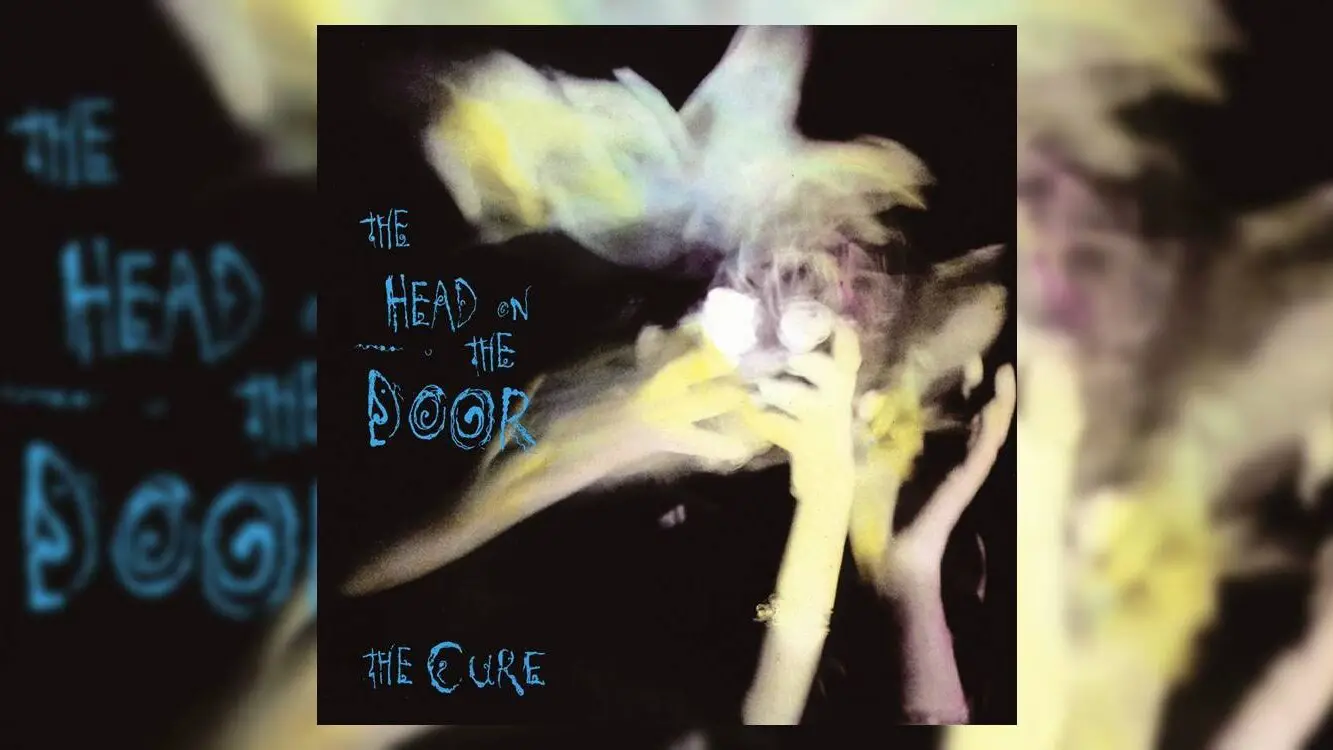The Head on the Door Songs Ranked
The Head on the Door is the sixth studio album by English rock band The Cure. It was released on 26 August 1985 by Fiction Records. Preceded by the single “In Between Days” which had reached No. 15 on the UK Singles Chart, The Head on the Door was described by Melody Maker as “a collection of pop songs”.[2] With its variety of styles, it allowed the group to reach a wider audience in both Europe and North America. In the United Kingdom it became their most successful album to date, entering the albums chart at No. 7 on 7 September. The album is the first to feature drummer Boris Williams. Bassist Simon Gallup, who had previously worked on three major Cure albums of the early 1980s, was called back before the recording. In 1985 the band became a quintet with instrumentalist Porl Thompson as their fifth official member. The Head on the Door is the first Cure album where all the songs were composed solely by singer and guitarist Robert Smith. Here are all of The Head on the Door songs ranked.
Don’t miss out on the music of the English pop-rock band. Click below and listen to their famous songs.
10. Screw
“The funky Screw is the closest that comes to a throwaway track here, and the main reason why this album doesn’t get a perfect score, but it’s still good – the chorus is a little obvious and dumb, but there’s still a striking and catchy combination of menacing fuzz bass, Middle Eastern flavoured keyboard line and weird harmonized vocals near the end and as the last of the relatively lightweight pop numbers, it acts as a useful breather before the album’s tragic closer Sinking. “
9. The Baby Screams
“The Baby Screams is another winner, the first clear nod to The Cure’s gothic period, but in quite a different vein, being less introspective than most of Seventeen Seconds or Faith, and less overtly lugubrious than Pornography – Smith sounds more invigorated, bold, defiant, unashamedly hysterical, almost joyous but of course in a strictly macabre sense, perfectly complementing the song’s combination of spinning guitar, throbbing bass and martial drum beat to produce its dance of death feel.”

8. Push
“Closing side one, the majestic latin-styled Push is another clear stand-out, and another striking example of a Cure song which is so rich in incident and hooks vocally as well as instrumentally that it’s easy to forget its relative lyrical sparseness – it’s not until well after two minutes that Smith’s vocals properly come in.”
See more: The Cure Albums Ranked
7. Six Different Ways
“And then yet again the mood changes for the couldn’t-be-more-different Six Different Ways, belonging to the lighter pop vein of Close to Me, but arguably better as it’s more inventive with greater compositional ingenuity. The nursery rhyme-like pipe melody, like a child’s five-finger piano exercise, intermingled with other quirky keyboard sounds, an odd shuffling irregular piano and drums groove in, unusually for The Cure, a slow 3/4 topped by Smith’s most delightfully engaging and seductive vocal is what justifiably sticks in the memory, but further listens reveal plenty more, not least that dark and unsettling fragmentary introduction, like a song having been broken up and reconstructed, and the slightly sinister low string line emerging from the depths making it sound like a disco song turned upside down.”

6. The Blood
“The album ups the tempo again with The Blood, this time very different in tone from In Between Days, with its hilarious vocal trills leading to a distinctly Spanish sounding number, both in its chord changes, convincingly flamenco-styled acoustic guitar strummed chords and solo and exotically flavoured keyboard riff.”
5. A Night Like This
“A Night Like This returns to the more sombre and richly produced mood of Push (it’s quite evident that these use the same production team). While not quite as strong as that song, it holds the interest through its attractive ringing lead and contrasting darker fuzz guitars and plaintive often harmonized vocals, with Ron Howe’s guest saxophone growing seamlessly out of the lower guitar line the best part.”

See more: The Cure Songs Ranked
4. Sinking
“This is one of The Cure’s finest songs to date and this together with In Between Days constitute one of the greatest bookends to an album in popular music history – profoundly poignant, deeply moving, evocatively arranged and performed, this encapsulates everything that made the darker Cure so great up to this point, with the same kind of fatalistic mood of Faith and as the title suggests, the feeling of sinking deeper into the watery depths of despair that the later The Same Deep Water as You depicts.”
3. Kyoto Song
“The much slower and more brooding Kyoto Song, with its strange lyrical combination of nightmare visions and sexual craving, already signals this album’s eclectic intent, with its tinkling synthesizer line as the title suggests giving it a slight Japanese flavour, with Smith’s anguished often self-harmonized and chorused vocals, poignant minor key chord changes and heavy-hearted rhythm section conveying the song’s mix of desperation and erotica, and its concentration of mainly the higher registers giving it a nocturnal feel.”

2. Close to Me
“And then there’s the album’s second hit single, Close to Me, another one of the more famous Cure songs (though probably better known to many through its later Mixed Up rather than original album or 7” version). Unique for The Cure up to this point even for this album, unlike its fellow major key tracks In Between Days and Six Different Ways, on the surface like Boys Don’t Cry and The Caterpillar this is The Cure in a rare untroubled and light-hearted mood, their most melodically and harmonically straightforward, dispensing with guitars altogether and combining a simple repeated snare-dominated drum pattern, synthesized hand claps, warm sustained keyboard harmonies, an infectious child-like synthesizer riff later joined by backing vocal chants and a quirky quasi-baroque flute-like melody.”
1. In Between Days
“And the album could hardly get off to a better start with In Between Days, with Williams’ joyous and explosive burst of drums announcing The Cure’s greatest song to date and still one of their most beloved classic hits. Sell-out? It wasn’t even their highest charting single!”

